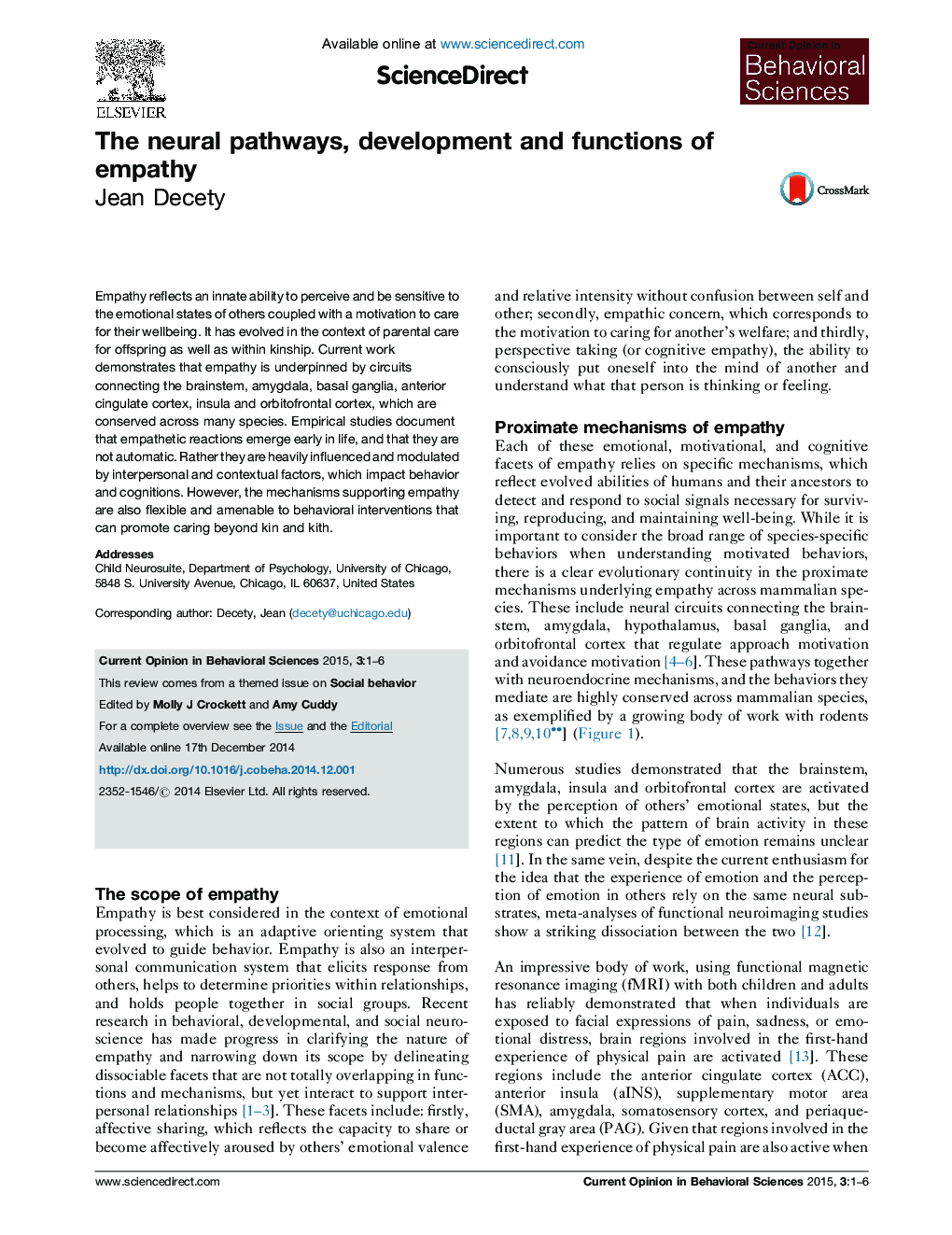| Article ID | Journal | Published Year | Pages | File Type |
|---|---|---|---|---|
| 4316375 | Current Opinion in Behavioral Sciences | 2015 | 6 Pages |
•Empathy has evolved in the context of parental care and kinship relationships.•Conserved neural circuits connecting brainstem, basal ganglia, insula and orbitofrontal cortex.•It emerges early in life.•Empathy is modulated by interpersonal and contextual factors.•Empathy is flexible and can be promoted.
Empathy reflects an innate ability to perceive and be sensitive to the emotional states of others coupled with a motivation to care for their wellbeing. It has evolved in the context of parental care for offspring as well as within kinship. Current work demonstrates that empathy is underpinned by circuits connecting the brainstem, amygdala, basal ganglia, anterior cingulate cortex, insula and orbitofrontal cortex, which are conserved across many species. Empirical studies document that empathetic reactions emerge early in life, and that they are not automatic. Rather they are heavily influenced and modulated by interpersonal and contextual factors, which impact behavior and cognitions. However, the mechanisms supporting empathy are also flexible and amenable to behavioral interventions that can promote caring beyond kin and kith.
